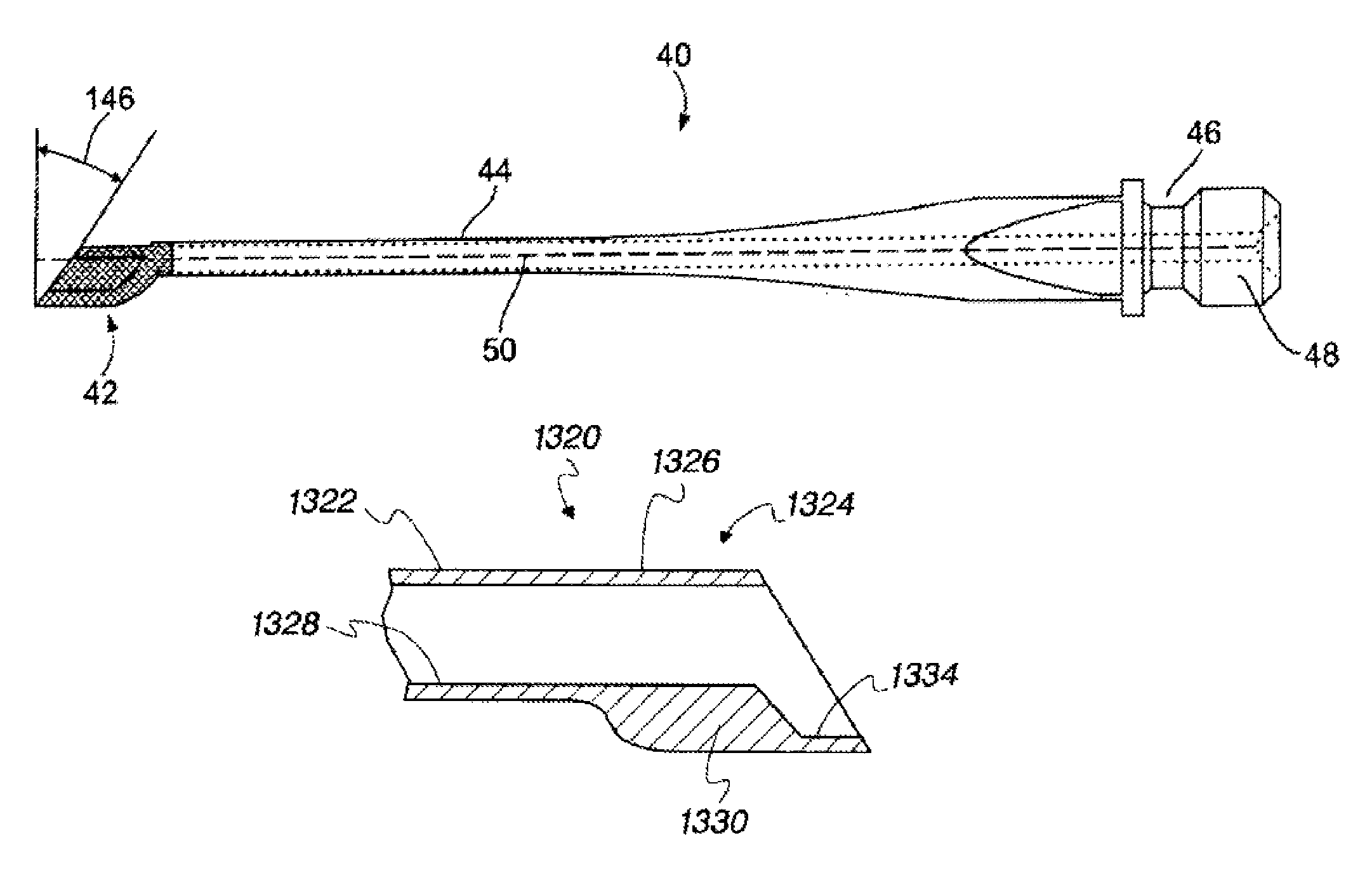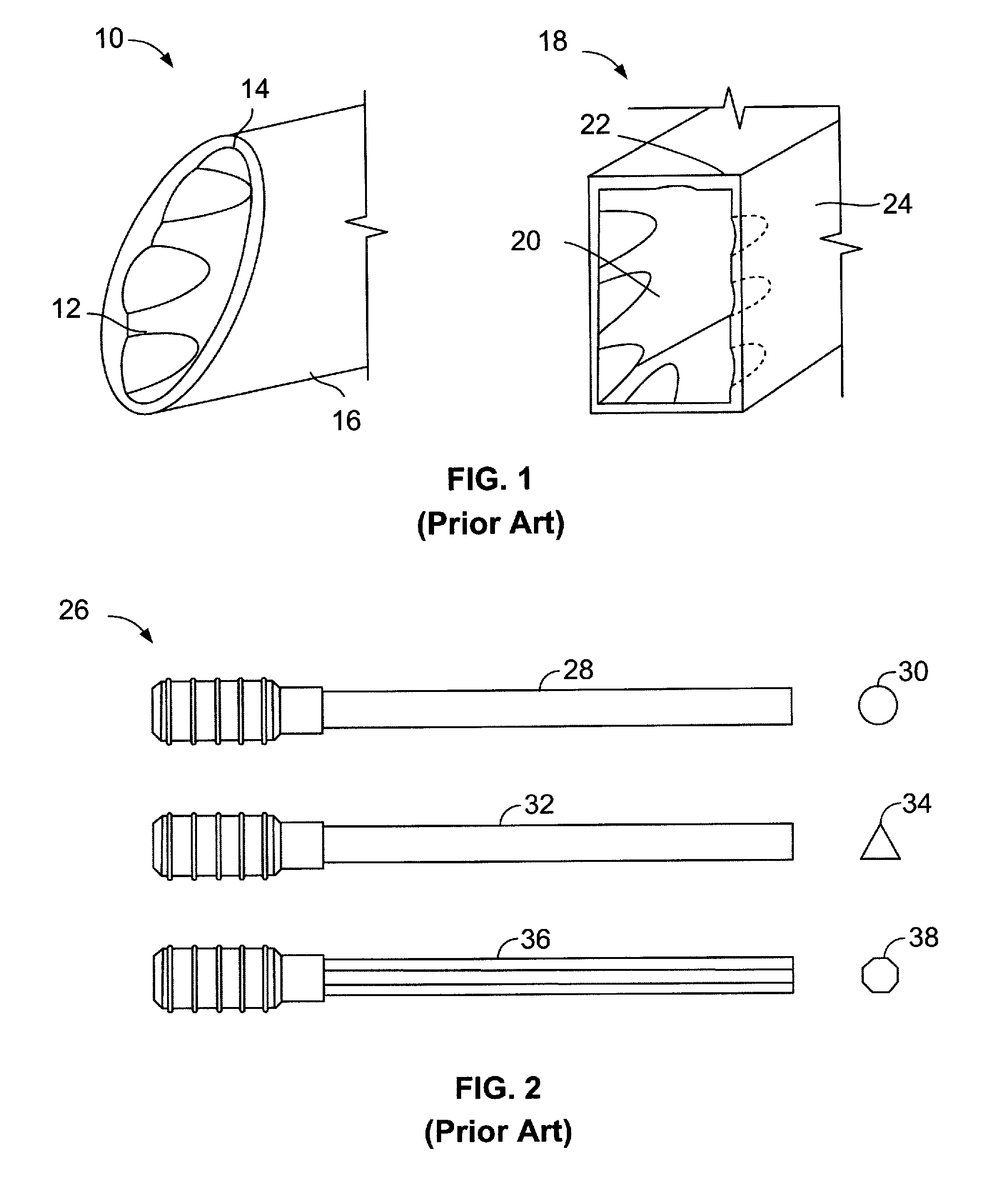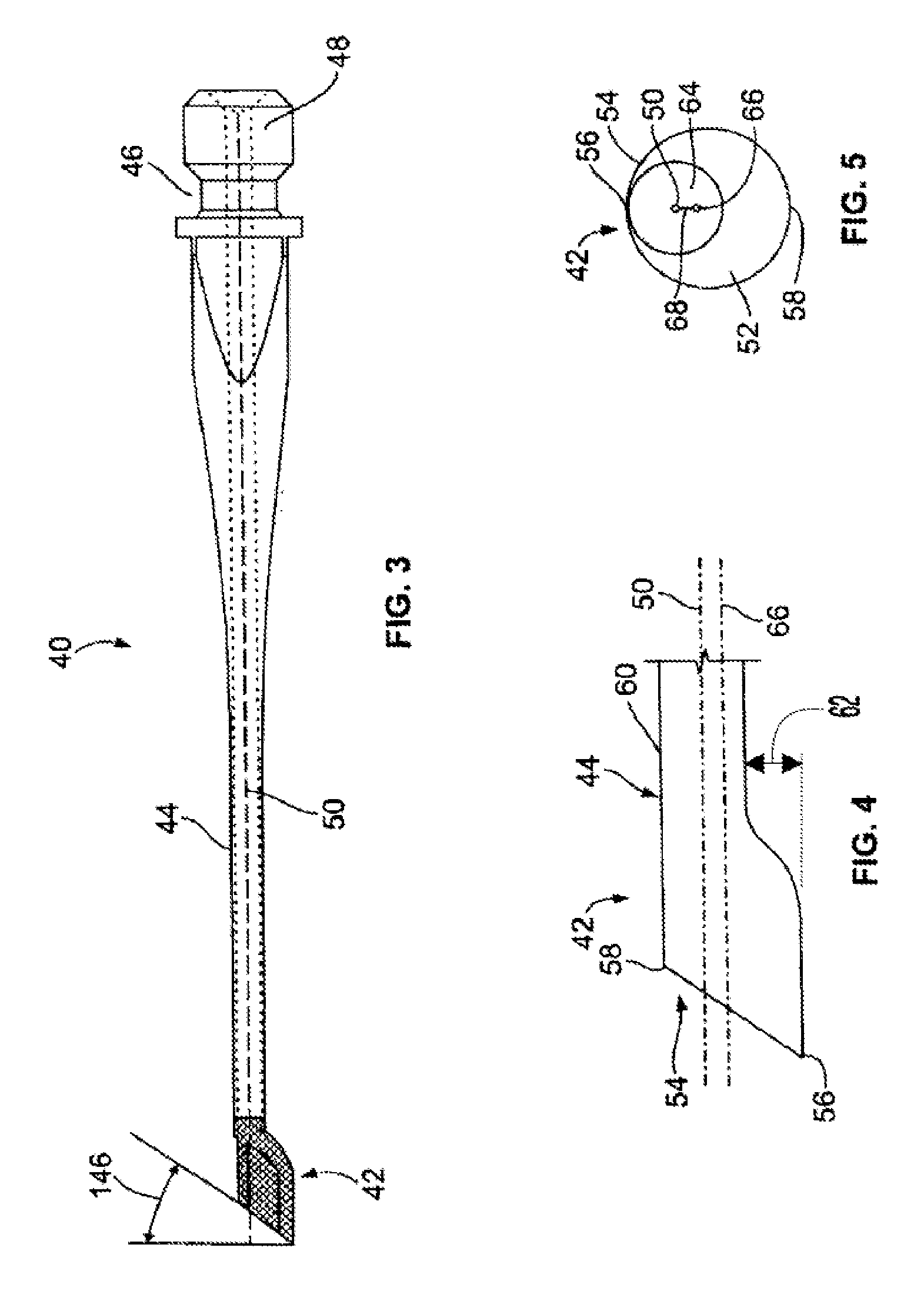Apparatus and method for phacoemulsification
a phacoemulsification and apparatus technology, applied in the field of surgical instruments and surgical techniques, can solve the problems of inability to take advantage of enhanced phacoemulsification, inability to distribute mass around the major axis of the needle, and easy damage to endothelial cells
- Summary
- Abstract
- Description
- Claims
- Application Information
AI Technical Summary
Problems solved by technology
Method used
Image
Examples
Embodiment Construction
[0125]Referring now to FIG. 1, the numeral 10 indicates generally a prior art phacoemulsification needle tip as shown in U.S. Pat. No. 6,007,555 (Devine), entitled “Ultrasonic Needle for Surgical Emulsification”, issued Dec. 28, 1999. Needle 10 is straight and terminates in an unflared mouth 12 defined by a lip 14 at the end of needle body 16, with lip 14 and needle body 16 formed as having an oval cross-section configuration.
[0126]Referring to FIG. 1, the numeral 18 indicates generally a prior art straight, unflared phacoemulsification needle tip from U.S. Pat. No. 6,007,555, having a mouth 20 defined by a lip 22 at the end of needle 24. The cross-sectional configuration of needle 18 and mouth 20 is a rectangle.
[0127]Referring now to FIG. 2, the numeral 26 identifies several prior art straight phacoemulsification needles as described in U.S. Pat. No. 5,725,495, with needle 28 having a circular cross-section as shown at 30, needle 32 having a triangular cross-section as shown at 34 ...
PUM
 Login to View More
Login to View More Abstract
Description
Claims
Application Information
 Login to View More
Login to View More - R&D
- Intellectual Property
- Life Sciences
- Materials
- Tech Scout
- Unparalleled Data Quality
- Higher Quality Content
- 60% Fewer Hallucinations
Browse by: Latest US Patents, China's latest patents, Technical Efficacy Thesaurus, Application Domain, Technology Topic, Popular Technical Reports.
© 2025 PatSnap. All rights reserved.Legal|Privacy policy|Modern Slavery Act Transparency Statement|Sitemap|About US| Contact US: help@patsnap.com



